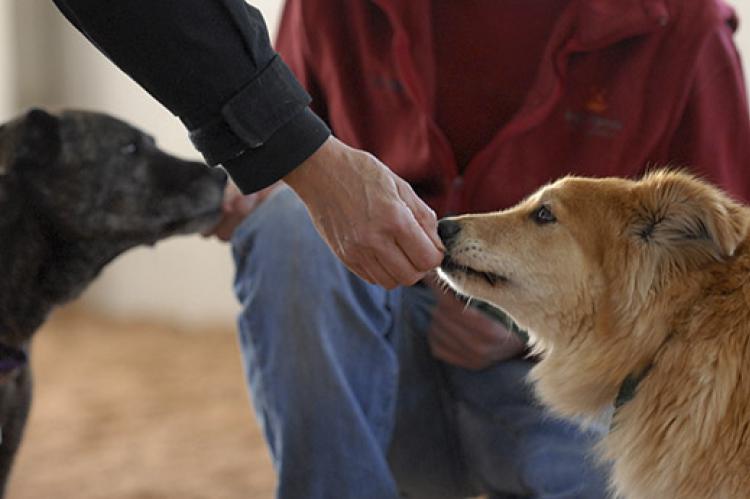How to Manage Dog Leash Reactivity

Dog leash reactivity is a relatively common behavior. The dog might be reacting toward other dogs, people, other animals, bikes, cars, and more. They might whine, bark, snarl, growl, pull on the leash, or lunge at whatever is triggering their leash reactivity. It can be scary or embarrassing — and take all the fun out of walking your pup. But fortunately, there are methods to help stop dogs from being reactive on leash.
Understanding reactive dog training
For dogs who are frightened, insecure, or trying to keep other dogs away from their people while on leash, behaviors such as barking, snarling, or lunging are often successful solutions for them. In the dog world, these are distance-increasing behaviors designed to keep the unwanted dog (or person, bike, etc.) away. If the other dog doesn’t get it, the people on the end of the leash usually do — and they retreat with their reactive dog.
These behaviors are often rooted in frustration. For example, if a dog-friendly dog sees another dog and wants to meet them but can't, the dog might bark and lunge. Exercise caution when letting your dog meet other dogs on leash, however, as the frustration buildup might lead to a scuffle or altercation.
Whether your dog is reactive toward other dogs or someone riding a bike, the training technique to stop leash reactivity is the same. You can use the dog’s desired outcome — moving away from what's bothering them — as the reinforcer to teach an alternate behavior.
Steps to stop dog leash reactivity
We’ll use reactivity toward other dogs to describe the training technique. Begin by setting up structured sessions with the assistance of some helpers: a person with a calm, well-mannered, non-reactive dog on leash.
Here are the steps to follow:
- With your dog on leash, approach to the point that your dog notices the other dog but is not reacting.
- When you are far enough away that your dog can focus on you again, have fun with your dog using praise, toys, or treats.
- Repeat the exercise several times. Approach the other dog, and then lead your dog away before they react to the other dog, keeping it positive and fun.
- When your dog begins looking to you in anticipation of moving away at the end of the approach, you can use that behavior (looking away from the other dog) as the cue for moving some distance away.
- As the dog builds positive experiences with other dogs on leash, you can begin decreasing the distance between the dogs on the approaches. This will be possible because your dog will be more relaxed and confident in their new solution to the stressful situation.
Other tips
While you and your dog are building these new skills into habits, avoid walks where unpredictable encounters might occur. Also, even after your dog is comfortable on leash around other dogs, be aware that your dog doesn’t have to approach and meet every dog who comes your way. In fact, other people might be working on similar challenges with their dogs, and not approaching them can be of great help with their training efforts.